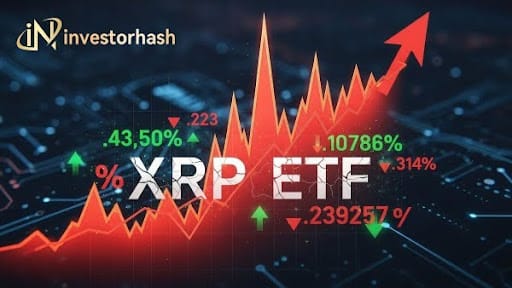Dogecoin Energy Use vs Bitcoin: A Deeper Look
The popularity of cryptocurrencies like Bitcoin and Dogecoin has skyrocketed in recent years. With this increased attention also comes scrutiny around the energy consumption required to mine and transact with these digital currencies. Of the two, Bitcoin is often criticized as being extremely energy intensive. But how does Dogecoin's energy use stack up in comparison?
cryptocurrency-mining">The Basics of Cryptocurrency Mining
To understand the energy demands, it's important to first understand the mining process. Cryptocurrencies like Bitcoin and Dogecoin are digital and decentralized - no single entity controls the network. Instead, these networks rely on miners around the world who use specialized computers to verify and record all transactions on the blockchain, the public ledger underpinning cryptocurrencies.
Mining requires significant computing power, which translates to large amounts of electricity. The mining process involves computers competing to solve complex mathematical puzzles. The first to solve the puzzle is rewarded with newly minted cryptocurrency. This "proof of work" process secures the network while minting new coins.
Bitcoin's Substantial Energy Appetite
As the first wildly successful cryptocurrency, Bitcoin set the precedent for energy-intensive proof of work mining. Today, Bitcoin mining consumes around 91 terawatt hours of electricity per year - more than what Finland uses annually! This staggering amount is due to a few key factors:
- Bitcoin's rising value has intensified mining competition, requiring ever more computing power. More computations mean more energy.
- Much of Bitcoin's mining occurs in China, which relies heavily on coal-based electricity.
- Bitcoin mining is unusually energy intensive by design. Its puzzle-solving requires brute computational force rather than efficiency.
According to the Bitcoin Energy Consumption Index, a single Bitcoin transaction requires 1750 kWh to process - enough to power the average US household for 60 days!
Dogecoin Takes a Different Approach
In contrast, Dogecoin was created in 2013 as a fun, lighthearted cryptocurrency with lower energy requirements. Let's examine why:
- Different mining algorithm: Dogecoin uses a mining protocol called Scrypt, which is less energy-intensive than Bitcoin's SHA-256 algorithm. Scrypt's simpler computations can use standard GPUs rather than specialized equipment.
- Faster block time: Dogecoin's block time is just 1 minute versus Bitcoin's 10 minutes. Faster block times mean lower electricity per transaction.
- Higher coin supply: There are 132 billion Dogecoins in circulation compared to Bitcoin's cap at 21 million. More abundant coins mean miners don't have to compete as hard.
- Merged mining: Dogecoin miners can mine other coins simultaneously. This spreads out electricity requirements across multiple networks.
- Low price: At under $0.10, each DOGE is worth far less than 1 BTC. Cheaper coins mean less profit incentive per mining rig.
Direct Energy Comparison
To quantify things further, let's compare some direct energy metrics between the two cryptocurrencies:
- Hash rate: Bitcoin's total hash rate (combined computations per second across the network) is 150 quintillion hashes per second. Dogecoin's is just 275 trillion hashes per second - over 500 times lower.
- Average electricity used per transaction: A Bitcoin transaction takes 707 kWh, while Dogecoin averages just 0.12 kWh.
- Estimated annual electricity consumption: Bitcoin mining uses around 91 TWh per year. Dogecoin consumes roughly 82 gigawatt hours - over 1000 times less!
"While no cryptocurrency achieves perfect sustainability, Dogecoin sets itself apart with a fun community and creative solutions to drastically reduce its energy footprint vs Bitcoin."
Key Takeaways
- Bitcoin's energy hunger stems from its design, mining incentives, and rising adoption. Its energy use may be a necessary cost for decentrailzation.
- Dogecoin's lower value, lighter consensus mechanism, and abundant coin supply allow it to operate with far less computing power.
- Dogecoin has found innovative ways to piggyback off other coin networks to further improve efficiency.
Is Dogecoin's Lower Energy Use Sustainable?
Dogecoin offers a surprisingly energy lean alternative, but can it remain efficient if adopted at a similar scale as Bitcoin? Here are some factors to consider:
- Widespread use requires some increase in mining power and electricity. Yet Dogecoin's efficiency advantages should minimize this.
- If Dogecoin's popularity and value grow enough, miners may be incentivized to use more electricity despite the coin abundance.
- As computing improves, per transaction energy costs could further decrease across blockchains.
- Fully renewable mining operations continue to expand, offsetting electricity demands.
- Development teams remain dedicated to seeking efficiency, exploring alternatives like "proof of stake" that require no mining.
All things considered, Dogecoin appears well positioned to scale responsibly. But sustained growth without impact is tricky for any cryptocurrency. Deliberate design choices and proactive development will be key.
How Can Dogecoin Stay Eco-Friendly?
Dogecoin's environmental edge comes from its unique community-driven approach. Here are a few ways it can maintain an energy efficient blockchain:
- Prioritizing fun and accessibility to avoid hyper-competitive mining arms races. The friendly meme culture facilitates this.
- Using influencers and developers to promote renewable mining operations. This aligns with Dogecoin's philanthropic efforts.
- Continuing openness to experimenting with proof of stake, merged mining, and other efficiency innovations.
- Supporting projects that carbon offset mining impacts or convert waste heat for good.
- Encouraging efficient and optimized consumer hardware for mining rather than specialized ASIC rigs.
Dogecoin offers a glimpse of how next-gen cryptocurrency design can drastically reduce environmental impact. Its vibrant community and openness to trying new approaches will be critical assets moving forward.




